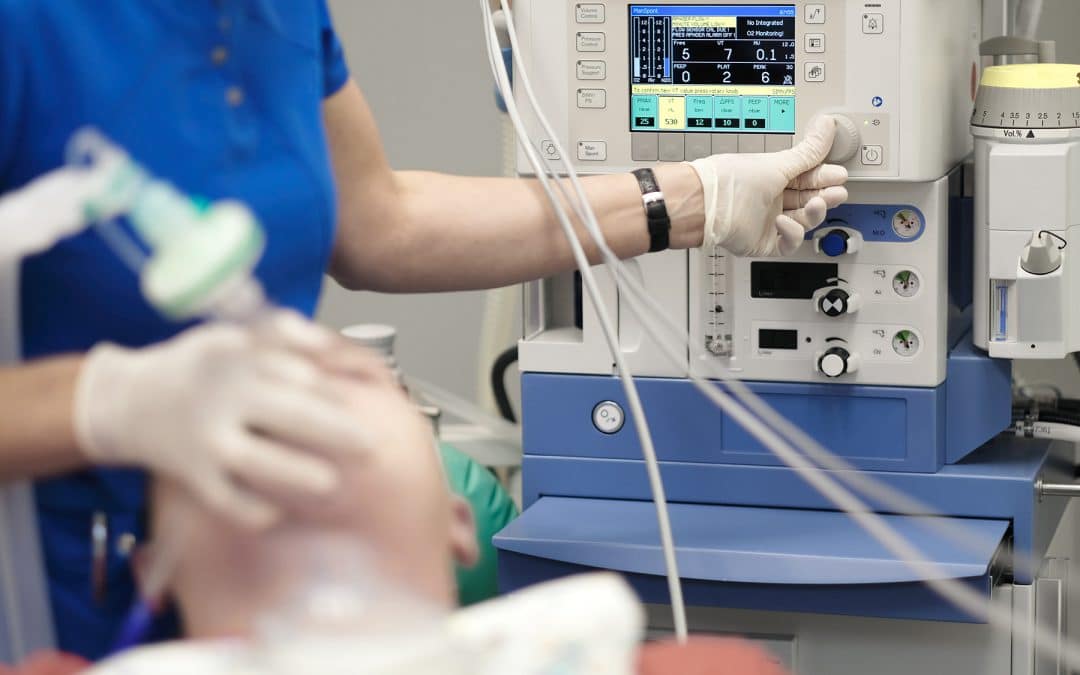For many people, the thought of undergoing a dental procedure can be nerve-wracking. Whether it’s due to severe dental anxiety, complex surgical needs, or special healthcare requirements, general anesthesia in dentistry provides a way to ensure patient comfort and safety during treatment. At Glen Forest Dental Company, we specialize in sedation dentistry, offering state-of-the-art anesthesia options to help our patients receive the dental care they need without stress or discomfort.
This Article Will Address:
- What general anesthesia is and how it differs from other sedation options
- When general anesthesia is recommended in dentistry
- What happens before, during, and after a procedure involving general anesthesia
- Recovery expectations and tips
- Safety considerations and how Glen Forest Dental Company ensures patient safety
What Is General Anesthesia in Dentistry?
General anesthesia is a medically induced state of unconsciousness that allows patients to undergo dental procedures without feeling pain or awareness. Unlike local anesthesia, which numbs a specific area, or conscious sedation, which keeps a patient awake but relaxed, general anesthesia renders the patient completely unconscious. This deep sedation is carefully monitored to ensure patient safety and comfort throughout the procedure.
How Does General Anesthesia Work?
- Induces a deep sleep-like state where the patient feels no pain
- Suppresses movement and reflexes to allow precise dental work
- Requires constant monitoring by a trained professional to manage vital signs
When Is General Anesthesia Recommended for Dental Procedures?
While many dental treatments can be performed with local anesthesia or mild sedation, there are specific cases where general anesthesia is the best option:
- Severe Dental Anxiety or Phobia – For patients with extreme fear of dental procedures, general anesthesia eliminates stress and discomfort.
- Extensive Dental Surgery – Procedures such as wisdom tooth extractions, full-mouth restorations, and dental implant placements often require prolonged time in the chair, making anesthesia a preferred option.
- Patients with Special Healthcare Needs – Children, individuals with developmental disabilities, and those with medical conditions that prevent cooperation during treatment may benefit from full sedation.
- Prolonged or Complex Procedures – Surgeries that require multiple steps or involve significant tissue manipulation often necessitate general anesthesia for patient safety and comfort.
At Glen Forest Dental Company, Dr. Kayla Roe carefully assess each patient’s medical history and dental needs to determine if general anesthesia is the right choice.
What Happens During a Dental Procedure with General Anesthesia?
Pre-Procedure Preparation
Before undergoing general anesthesia, patients will go through a thorough consultation, which includes:
- Medical history review to assess risks
- Pre-operative fasting instructions (typically 6-8 hours before the procedure)
- Medication adjustments, if necessary
- Discussion of the procedure and what to expect
How General Anesthesia Is Administered
- IV Anesthesia: A sedative is administered through an intravenous (IV) line, allowing for precise control over the depth of anesthesia.
- Inhaled Anesthesia: Some cases involve gas anesthesia administered through a mask.
- Monitoring Equipment: Throughout the procedure, heart rate, oxygen levels, and breathing are continuously monitored to ensure patient safety.
What to Expect After the Procedure
- Patients are taken to a recovery area where they are monitored as they wake up.
- Side effects such as drowsiness, nausea, and dry mouth are common but typically subside within a few hours.
- Patients will need someone to drive them home and should rest for the remainder of the day.
What Should I Expect During Recovery from General Anesthesia After Dental Surgery?
Recovery times vary based on the individual and the complexity of the procedure. Here’s what patients should know:
- How long does anesthesia stay in the system? Most patients feel groggy for a few hours post-procedure but should fully recover within 24 hours.
- Common side effects: Fatigue, dizziness, dry mouth, mild nausea, and sore throat.
- When can normal activities resume? Patients should avoid driving, heavy lifting, or making important decisions for at least 24 hours.
- Tips for a smooth recovery:
- Stay hydrated but avoid drinking through a straw.
- Eat soft foods like soups and yogurt.
- Get plenty of rest and avoid strenuous activity.
- When to contact the dentist: If nausea, vomiting, prolonged dizziness, or difficulty breathing occurs, contact Glen Forest Dental Company immediately.
Is General Anesthesia Safe for Dental Procedures?
General anesthesia is widely used in dentistry and is considered safe when administered by trained professionals. However, certain precautions must be taken:
- Patient assessment: Medical history, allergies, and pre-existing conditions must be reviewed.
- Anesthesia monitoring: Continuous monitoring of oxygen levels, heart rate, and blood pressure ensures patient safety.
- Post-operative care: Proper instructions help minimize risks and promote healing.
How Does Glen Forest Dental Company Ensure Patient Safety with General Anesthesia?
Our commitment to patient safety sets us apart. At Glen Forest Dental Company, we use:
- State-of-the-art technology such as the iTero Scanner and CBCT Imaging for precise treatment planning.
- Highly trained professionals who specialize in sedation dentistry and patient monitoring.
- Comprehensive pre-treatment evaluations to assess health conditions and minimize risks.
- Personalized treatment plans to ensure the best outcomes for each patient.
Ensuring a Safe and Comfortable Dental Experience with General Anesthesia
General anesthesia provides a safe and effective solution for patients needing complex dental care. Whether you’re facing an extensive procedure or struggling with dental anxiety, Glen Forest Dental Company in Richmond, VA offers expert sedation options tailored to your needs.
Don’t let fear or discomfort prevent you from achieving a healthy smile. Contact us today to schedule a consultation and explore how our advanced anesthesia options can provide a comfortable, stress-free dental experience.
Sources:

Dr. Kayla Roe, is the owner of Glen Forest Dental Company in Richmond, VA. Originally from Southeast Florida, she moved to Richmond as a child and later earned dual degrees in Biology and Human Nutrition from Virginia Tech. She completed her dental education at Virginia Commonwealth University’s School of Dentistry before beginning her career in Chicago. Driven by a passion for patient care, Dr. Roe returned home to open her own practice in 2020. Outside of dentistry, she enjoys baking, spending time with her husband, Mitch, and their dog, Riley, and embracing life as a new mom.
Dentistry Done Differently
We’re Not Your Average Dental Practice… We’re Redefining the Whole Experience

